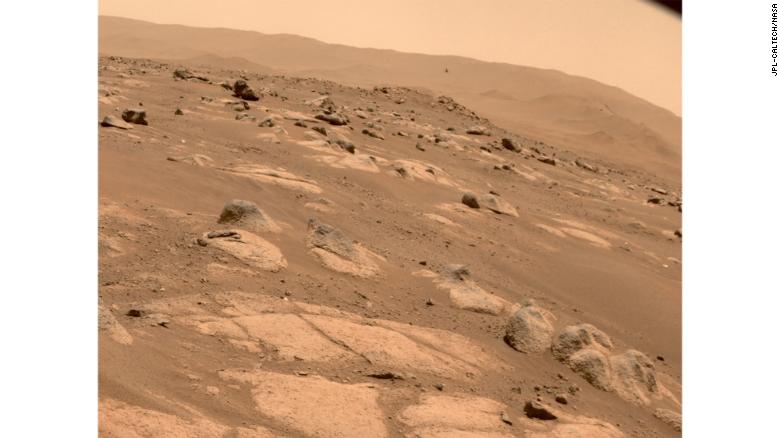Ingenuity Perseveres: A Follow Up
May 4, 2021
 In February, NASA’s Perseverance rover reached its destination on Mars, ready to conduct various tests and experiments on the Red Planet. Among these tests was the first powered and controlled flight on another planet, through the use of the Ingenuity drone, a miniature helicopter with its own slew of tests to complete. At the end of March, the Ingenuity craft was preparing itself for liftoff, and now, has completed many of its initial diagnostic tests.
In February, NASA’s Perseverance rover reached its destination on Mars, ready to conduct various tests and experiments on the Red Planet. Among these tests was the first powered and controlled flight on another planet, through the use of the Ingenuity drone, a miniature helicopter with its own slew of tests to complete. At the end of March, the Ingenuity craft was preparing itself for liftoff, and now, has completed many of its initial diagnostic tests.
The helicopter, weighing a meager 4 pounds, slowly unfolded itself from the belly of the Perseverance rover, completing its separation on the 3rd of April. Being detached from the rover allowed NASA to ensure the Ingenuity had the correct insulation, heaters, and enough energy to survive after observing it throughout its first cold, martian night.
Next on the list is a 31-day window to complete 5 diagnostic flights, with basic survivability of the craft out of the way. As of Saturday, May 1st, the craft has completed 4 of its 5 flights, all proving to be very promising for the rest of Ingenuity’s journey. According to Thomas Zurbuchen, NASA’s associate administrator for the Science Mission Directorate, the basic tech demo of the craft has been very successful, with the craft remaining in excellent condition. The helicopter continued to smash expectations and crush its previous records with each successive flight. Ingenuity’s cameras were able to capture images of the surface of Mars at angles never before seen by human eyes, a huge leap for the surveying of said surface.
Due to its outstanding performance, after its final diagnostic flight concludes, the Ingenuity will actually remain in service alongside the Perseverance rover in a joint mission, marking the beginning of the Ingenuity’s operations demonstration. While the Ingenuity searches the surface around the rover for future possible landing sites, the Perseverance will continue its original mission- collecting samples from the rock of what is suspected to be a nearly 4-billion-year-old lakebed. The respective teams for both the rover and the helicopter will also make use of the extra time allotted to the Ingenuity to conduct tests to see how the crafts can work in sync for the benefit of future missions.
The Perseverance’s mission may seem mundane in comparison to the Ingenuity’s, however on April 21st, NASA announced that Perseverance was able to produce a small amount of breathable oxygen from Mars’ atmosphere using the Mars Oxygen In-Situ Resource Utilization Experiment tool, or MOXIE, for short. Completed through the splitting of oxygen from carbon dioxide molecules, the production of breathable oxygen is vital to long-term survival for humans on Mars. With this step forward, researchers hope to scale up the technology in order to produce enough oxygen for manned missions to the Red Planet.
The two craft will continue along their respective missions, working closely together in order to provide more scientific advancements and more discoveries about Mars and its geological history, gathering data for eager researchers, and providing a view of an optimistic future for human exploration of our friendly neighbor Mars.



